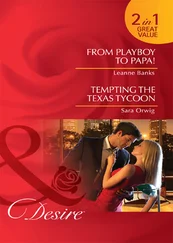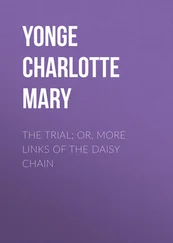It all made for emotional tensions aplenty. After Chief Justice Ryder had to deal with a young woman charged with killing her 6-month-old baby in 1754, he confided to his diary that he had been so affected by his own speech to the jurors ‘that the tears were gushing out several times against my will. It was discerned by all the company – which was large – and a lady gave me her handkerchief dipped in lavender water to help me.’ He nevertheless encouraged the jury to put aside any doubts about the defendant’s sanity, and remained sufficiently stoical to sentence her to death, with an instruction that her body be dissected for the benefit of medical science. Even more lachrymose was the 1777 forgery trial of Dr William Dodd. ‘The judges, the jury, the counsel, the spectators, all the world was bathed in tears,’ observed a bemused German visitor. Horrid though it sounds, the jury convicted after ten minutes and Dodd also hanged without a pardon.
For much of the eighteenth century, courtroom and gallows seemed to complement each other. Foreign visitors to England were repeatedly struck by the contrast between the safeguards of its trials and the brutality of its punishments, but in an era of Georgian gentility, when sentimentality and rigour were different sides of the same moral coin, the English rarely seemed to perceive a contradiction. Just as the pamphleteers began their accounts with the foul deed and ended with its just deserts, courtroom spectators were generally no less eager to see the deadly denouements. But towards the century’s end, the balance finally began to tilt away from executions, and would continue to tip for several more decades. The reason was not that the courtroom contest became even more thrilling. It was that punishments began literally to disappear.
Eighteenth-century thinkers, convinced that sufficiently rational laws could facilitate progress and possibly even perfection, were always fascinated by crime and punishment, and as each escalated in tandem they could not but wonder what was going wrong. Some argued that the brutality was counter-productive – pointing out, for example, that marking convicts by clipping their ears and slitting their nostrils was not likely to assist their employment prospects. Equally common, if more abstruse, was the belief that penalties had become decoupled from the crimes for which they were imposed, and that the symbolic links needed tightening. Thomas Jefferson was among those who took such a view, and in 1778 he drafted a law for Virginia that would have poisoned poisoners and castrated rapists. The American also believed, for reasons which are sadly not recorded, that it was appropriate to drill half-inch holes through the noses of female polygamists. His attempt to rationalize Virginia law was never enacted.
Capital punishment, which almost everyone agreed was not doing enough to deter crime, inspired particular concern. Some argued that its imposition was so capricious as to be useless, and gazed admiringly towards the proverbially enlightened despotisms of Russia and the Austro-Hungarian Empire, where it had just been abolished. More common was the belief that executions were inherently sound, and that a tad more terror would repair such defects as the system might possess. Britain’s Parliament in 1752 accordingly authorized judges to order the posthumous tarring and chaining of criminals’ corpses, as and when they thought that that would frighten more people for longer. Others envisaged even more dramatic ways to maximize the fear. James Boswell proposed in 1783 that convicts should be hanged without hoods ‘that the distortions may be seen’. In an ideal world, he argued, criminals would have their heads publicly smashed open with an iron mallet, before being jugulated with a machete and hacked apart with an axe.
But at the same time, there were others who felt that the public displays of aggression, no matter how well intentioned, were in fact doing more harm than good. As far back as 1725, one writer had warned that hangings were attended disproportionately by drunks, prostitutes, and pickpockets, and that potential criminals were enjoying the killings far too much to be deterred by them. Over subsequent decades, crowds had become increasingly violent, frequently trying to free prisoners and often launching assaults, up to and including murder, on the executioners and surgeons present. The phenomenon, seen across Europe, inspired British legislators in 1783 to replace the Tyburn processions with stationary executions outside Newgate. But the volatility also gave rise to far more radical proposals for reform. Tinkering with the spectacle was no solution to rising crime, argued some – because publicity itself was the problem.
The reasoning had first been set out in 1751. Henry Fielding, a London magistrate as well as the author of classics such as Tom Jones , had set out to explore why London seemed to be experiencing an upsurge in robberies. He assumed, like almost everyone else, that inefficient penalties were the primary cause; but instead of suggesting that their violence be increased, he proposed that it be hidden. According to Fielding, it was the delay between trial and execution that created pity for capital offenders, and it was the opportunity granted those offenders to address the gallows crowd that turned them into victims or heroes. Swiftness and secrecy were therefore essential. Prisoners should be hanged in the yard of the court in which they had been tried, within four days of conviction, watched in silence by the robed and bewigged judges who had sentenced them. ‘Nothing…can be imagined more terrible,’ he urged – and writer that he was, he knew that it was imagination rather than sight that produced fear. Shakespeare’s Macbeth served to illustrate the point. ‘A murder behind the scenes’, he explained, ‘will affect the audience with greater terror than if it was acted before their eyes.’ *
Fielding’s proposal was a little too avant-garde to be enacted, but it would influence legislators for the next century and heralded an era in which power would be expressed as much by concealment as by display. Branding irons, whipping posts, and pillories were being abandoned across the Western world by the late eighteenth century. Do-gooders, inspired by the hope of making convicts work, pray, and see the error of their ways, would soon perfect a new kind of prison – the penitentiary or reformatory – which made its debut in the eastern United States at the turn of the century. The causes driving the change varied considerably from country to country (a major impetus in Britain was the American Revolution of 1776, which robbed the country of its largest penal dustbin overnight), but the shift was seen throughout Europe and America. And during the nineteenth century it began to fuel demands to conceal the most visible punitive spectacle of all – the public execution.
Those who campaigned most strongly for reform were the politicians who most favoured the death penalty – because they feared that the unruliness and unpleasantness of the public ritual was beginning to threaten its continued existence. For precisely opposite reasons, resistance was led by abolitionists – men like Samuel Bowne, a Quaker Assemblyman in New York, who argued against the concealment of public throttlings in 1834 on the grounds that popular disgust would soon lead ‘to the entire abolition of capital punishment’. And the supporters of death were soon making the running. Their first success came with a ban on public executions in Rhode Island in 1833 – followed within two years by similar laws in Pennsylvania, New York, New Jersey, and Massachusetts. British opponents of capital punishment fought a similar battle to keep the horror visible, but they too were destined to be outmanoeuvred. On 29 May 1868, three days after one last hanging – before a seething crowd that yelled ‘body-snatcher’ at the executioner as he cut down the corpse – supporters of the death penalty were able finally to hide it behind prison walls.
Читать дальше
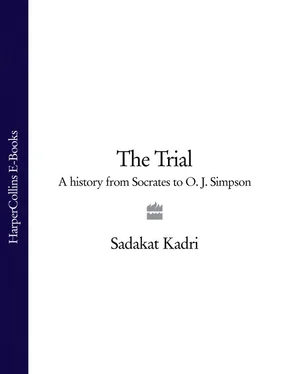
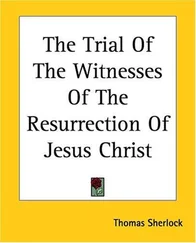
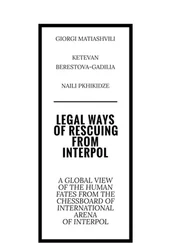

![Theresa Cheung - The Dream Dictionary from A to Z [Revised edition] - The Ultimate A–Z to Interpret the Secrets of Your Dreams](/books/692092/theresa-cheung-the-dream-dictionary-from-a-to-z-r-thumb.webp)
